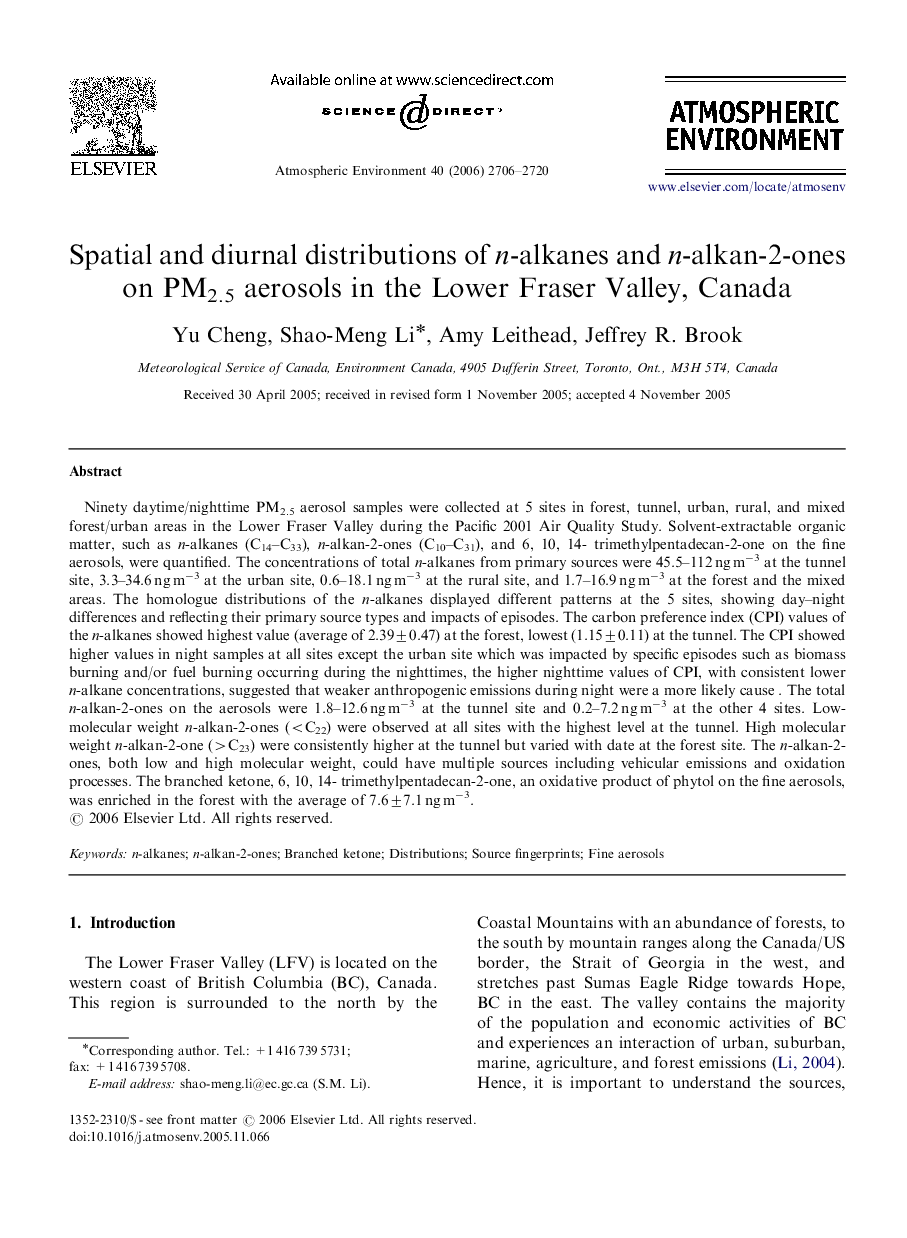| کد مقاله | کد نشریه | سال انتشار | مقاله انگلیسی | نسخه تمام متن |
|---|---|---|---|---|
| 4444948 | 1311262 | 2006 | 15 صفحه PDF | دانلود رایگان |

Ninety daytime/nighttime PM2.5 aerosol samples were collected at 5 sites in forest, tunnel, urban, rural, and mixed forest/urban areas in the Lower Fraser Valley during the Pacific 2001 Air Quality Study. Solvent-extractable organic matter, such as n-alkanes (C14–C33), n-alkan-2-ones (C10–C31), and 6, 10, 14- trimethylpentadecan-2-one on the fine aerosols, were quantified. The concentrations of total n-alkanes from primary sources were 45.5–112 ng m−3 at the tunnel site, 3.3–34.6 ng m−3 at the urban site, 0.6–18.1 ng m−3 at the rural site, and 1.7–16.9 ng m−3 at the forest and the mixed areas. The homologue distributions of the n-alkanes displayed different patterns at the 5 sites, showing day–night differences and reflecting their primary source types and impacts of episodes. The carbon preference index (CPI) values of the n-alkanes showed highest value (average of 2.39±0.47) at the forest, lowest (1.15±0.11) at the tunnel. The CPI showed higher values in night samples at all sites except the urban site which was impacted by specific episodes such as biomass burning and/or fuel burning occurring during the nighttimes, the higher nighttime values of CPI, with consistent lower n-alkane concentrations, suggested that weaker anthropogenic emissions during night were a more likely cause . The total n-alkan-2-ones on the aerosols were 1.8–12.6 ng m−3 at the tunnel site and 0.2–7.2 ng m−3 at the other 4 sites. Low-molecular weight n-alkan-2-ones (
Journal: Atmospheric Environment - Volume 40, Issue 15, May 2006, Pages 2706–2720